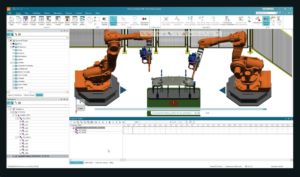
The need for high-quality technical documentation is driving organizations to seek efficient methods for content creation. One of the most promising approaches is the adoption of the Darwin Information Typing Architecture (DITA), an XML-based standard designed for modular content development and reuse. By leveraging DITA, organizations can enhance their documentation processes, ensure consistency, and reduce redundancy, ultimately leading to more effective communication with diverse audiences.
Understanding DITA Reuse
At its core, DITA allows authors to create modular content components referred to as “topics.” These topics can encompass concepts, tasks, or reference materials. The primary advantage of DITA lies in its capability to facilitate content reuse across various documents and outputs. This strategic reuse not only conserves time and resources but also ensures that documentation remains current and accurate.
The initial step in optimizing content through DITA reuse is identifying which materials can be reused. This process involves:
- Analyzing existing content: Review current documentation to spot repetitive information or topics suitable for modularization.
- Creating topic-based structures: Decompose large documents into smaller, manageable topics categorized as concepts, tasks, or references.
Once potential reusable topics are identified, they should be structured clearly to function independently while integrating seamlessly into various contexts.
Utilizing DITA Maps
DITA maps are integral for content organization, allowing users to define the structure and relationships of topics. Effective practices for utilizing DITA maps include:
- Organizing by themes or projects: Group topics logically based on their purpose, which simplifies content management and retrieval.
- Version control: Maintain multiple versions of maps to manage changes across different products or releases.
- Linking and cross-referencing: Use links and cross-references within DITA maps to connect topics, enhancing user understanding without duplicating content.
Another powerful feature in DITA is conditional text, enabling authors to provide variations in topics without duplication. By tagging content elements with attributes, specific sections can be controlled to appear based on output requirements, such as audience type or product variations. This approach allows for optimized content delivery tailored to specific messaging while maintaining a single source of truth.
Additionally, content profiling extends the concept of conditional text by allowing organizations to define profiles based on user experience levels, such as “beginner,” “advanced,” or “admin.” By applying these profiles, technical writers can craft customized documentation sets that meet the distinct needs of various user groups, ensuring relevant information is presented without unnecessary detail.
Implementing a robust content management system (CMS) that supports DITA can greatly enhance the content reuse process. A CMS can provide:
- Version control: Maintain historical versions of topics and maps for easy retrieval and comparison.
- Content search and retrieval: Enable quick searches for reusable content across the documentation set, saving valuable time.
- Collaboration features: Facilitate teamwork by allowing multiple authors to contribute and manage content, thereby reducing redundancy.
Finally, optimizing content is an ongoing endeavor. Establishing a regular schedule for reviewing and updating reusable content ensures accuracy and relevance. Involving subject matter experts during this process can enhance the credibility of documentation and align content with current practices and technologies.
By adopting and mastering effective DITA reuse techniques, organizations can significantly improve their documentation efficiency. This not only enhances the user experience by providing consistent and relevant information but also positions organizations to succeed in delivering impactful, user-centric content in a rapidly evolving landscape.







